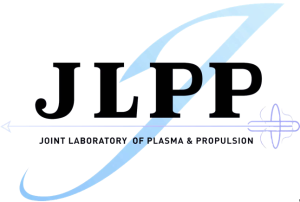Our research
PIC-MCC
PIC-MCC is short for Particle in Cell-Monte Carlo Collision, which is a first principal way to simulate the plasma.

PIC-MCC algorithm routine
In the PIC method, the different kinds of particles in each grid can be represented by a set of discretized masses. The information of these particles, such as mass, charge, position, velocity, acceleration, etc., is recorded in the computer and is continuously computed iteratively in time steps. When using the PIC method to track the motion of particles, there are two states, one is to assign the particle information on the grid points to the particles in the grid for motion simulation, and the other is to discrete the particle information to the adjacent grid points for macroscopic parameter statistics and calculations, which are repeated in one time step to reach the particle motion simulation in physical time.
The mutual collisions of particles within the plasma can be simulated using different collision methods, the main ones include Monte Carlo Collision (MCC) and Direct Simulation of Monte Carlo (DSMC). Both MCC and DSMC methods are based on Both MCC and DSMC methods are based on random variables and random sampling, and their theoretical basis is the central limit theorem in probability theory and statistical methods.
Plasma density, electro-magnetic field, ionization rate can be achieved in detail, while the specific impulse, thrust, efficiency can be statistically calculated. Free of many assumptions, PIC-MCC can get more detailed and accurate results but cost much more computational resource.

Plasma density distribution of a Hall thruster
In our lab, the PIC/MCC code are used to simulate the Hall thrusters, ion thrusters, cathodes and MPD thrusters etc. Many of physical aspects have been researched and the parallel methods are also researched for a quicker simulation.
Featured articles:
[1] Cao S, Ren J, Tang H, Zhang Z, Wang Y, Cao J and Chen Z 2018 Numerical simulation of plasma power deposition on hollow cathode walls using particle-in-cell and Monte Carlo collision method Physics of Plasmas 25 103512
[2] Jiang Y, Tang H, Ren J, Li M and Cao J 2018 Magnetic mirror effect in a cylindrical Hall thruster J. Phys. D: Appl. Phys. 51 035201
[3] Pan R, Ren J, Tang H, Cao S, Li J, Zhang Z, Zhou J and Cao J 2020 Application of the view factor model on the particle-in-cell and Monte Carlo collision code Phys. Rev. E 102 033311
[4] Chen Z, Wang Y, Ren J, Tang H, Wu P and Li M 2022 The fully-kinetic investigations on the ion acceleration mechanisms in an electron-driven magnetic nozzle Plasma Sources Sci. Technol. 31 055013
[5] Tang H-B, Cheng J, Liu C and York T M 2012 Study of applied magnetic field magnetoplasmadynamic thrusters with particle-in-cell and Monte Carlo collision. II. Investigation of acceleration mechanisms Physics of Plasmas 19 073108
(Lastly Updated in September, 2022)
